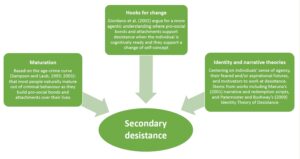The question of identifying optimum caseloads and workloads for probation staff has, of course, always been a thorny one as governments have consistently sought to reconcile the competing aims of maximum effectiveness and value for public money.
There has been additional focus on this issue since the split of the English and Welsh probation service under the Transforming Rehabilitation (TR) programme. In addition to the high workloads repeatedly identified by HMI Probation, particularly, but far from exclusively, among the Community Rehabilitation Companies (CRCs), the changes occasioned by TR have led to a number of contentious discussion points amongst the probation community including such issues as:
- What is the long-term impact for National Probation Service (NPS) staff of managing a caseload solely comprising those who have committed offences causing high levels of harm to the public?
- What is an appropriate caseload for responsible officers in CRCs who are operating to very different models and expectations, depending on the approach of their owner?
- Should caseloads be lower for NPS staff supervising high-risk offenders or are the demands of supervising more low/medium risk offenders within CRCs actually greater in terms of time and resources owing to the fact that a greater proportion may have more complex needs and/or are more likely to be perpetrators of domestic abuse with the associated public protection requirements and expectations?
With the re-design of probation and the return of all offender management responsibilities to the National Probation Service – plus the creation of 12 new Probation Delivery Partners who will be delivering Unpaid Work and accredited programmes in the new probation regions – the topic of the size of probation caseloads is very much under discussion again.
So I am very glad to report not only that Her Majesty’s Inspectorate of Probation has commissioned a rapid evidence assessment (REA) into probation caseloads but that Chris Fox’s team from the Policy Evaluation and Research Unit at Manchester Metropolitan University and myself will be undertaking the REA.
We will, of course, be interrogating all the normal academic databases and specialist probation journals for the best research evidence. However, we already know that there is relatively little formal research on probation caseloads.
Therefore, the main purpose of this blog post is to ask readers whether any of you know of any unpublished studies or research on probation caseloads and/or workloads, including links to related factors. We are particularly interested in evaluations which look at the impact of changing caseload figures, whether that be on reconviction rates, sentence completions, staff sickness and/or wellbeing levels or any other indicator.
If you are aware of any of this “grey” literature, Chris, myself and the rest of the team would be very grateful if you let us know. Please get in touch via this email link: I’d like to share information for the probation caseloads research
As befits a Rapid Evidence Assessment, this piece of work has a rapid turnaround and we expect to complete it in early 2020 with the expectation that HMI Probation will publish the findings later next year.
Thanks to Muscle and Brawn for the header image.









4 Responses
PSO wise currently 80-90 cases in midlands area, this is nuts.
I hope NPS caseloads in prisons are included in the survey. OMiC has given us more work but will anyone assess extra tasks given us by the prison we work in?
I fear mission creep abounds and to make it worse we lack any admin support that is the norm in the community.
NPS London PO – 30+ cases as standard, roughly half high risk/v high and rest medium.
The NPS continues to add unnecessary obligations: new formats, new targets, new service level measures, new templates… relentless and absolutely pointless. Like a couple years ago London brought in the ‘web’ tool and mandated it for all of our offenders – it’s a spider diagram where offenders work with their OMs to score how they are and create a collaborative sentence plan. It also comes with a massive of recording instructions..
They have introduced something called CMS (case management support) entry on Delius – which apparently links to your workload measurement. I don’t know whether that is the truth.
Also they don’t credit you with care taking cases. I’m care taking/supervising offenders for other areas and their OMs get the credit for doing fuck all.
Fucking PSS adds to the workload unnecessarily – keeps offenders on probation, sort of on a wired licence-order thing.
What you need to take in to account is that you can have 1 offender who takes up 60% of your time because they’re complex. You’re not credited for this.
The worst part are Parole reports and fucking relentless oral hearings. The reports for the parole board are outrageous and take up so much of our time it is an absolute joke . They (moj I think) have recently formatted the parole template – it makes it clearer sure but it’s more work.
My recommendations for you:
– parole board impact.
– the impact recording has on our time
– how our work is measured.
– how the workload measurement tool operates
– what is the optimal capacity.
– the amount of reports/assessments for example sex offenders being released on licence: pre-release oasys, licence condition PD1 form, AP REFERRAL, POLYGRAPH REFERRAL, social services referral ( CPC reports), induction paper completion, ISP oasys, ISP web, sentence plan for ISP, 5 day meeting target with AP keyworker, ARMS, programme ref/maps for change, RM2000, RSR, OGRS, Ogp, ovp, home visit, joint home visit, unannounced home visit, home visit risk assessment forms, recording in crissa,…etc..etc..etc..
In reply to Frusrated OM from London NPS can I congratulate you on your brilliant response; as a recently retired OM I feel your pain. The ridiculous number of assessment tools you listed is central to the problem and is more about back covering for the organisation than effectively managing risk or resources. The preoccupation with assessment and neglect of intervention has been an issue during my entire 30 years service. Caseloads must be small when the workload per case remains so unnecessarily high. The hiring of one or two “time and motion” operatives in one or two offices for a week could determine what is a manageable caseload…as simple as that. The commissioning of a REA is a blatant case of kicking the issue into the long grass!